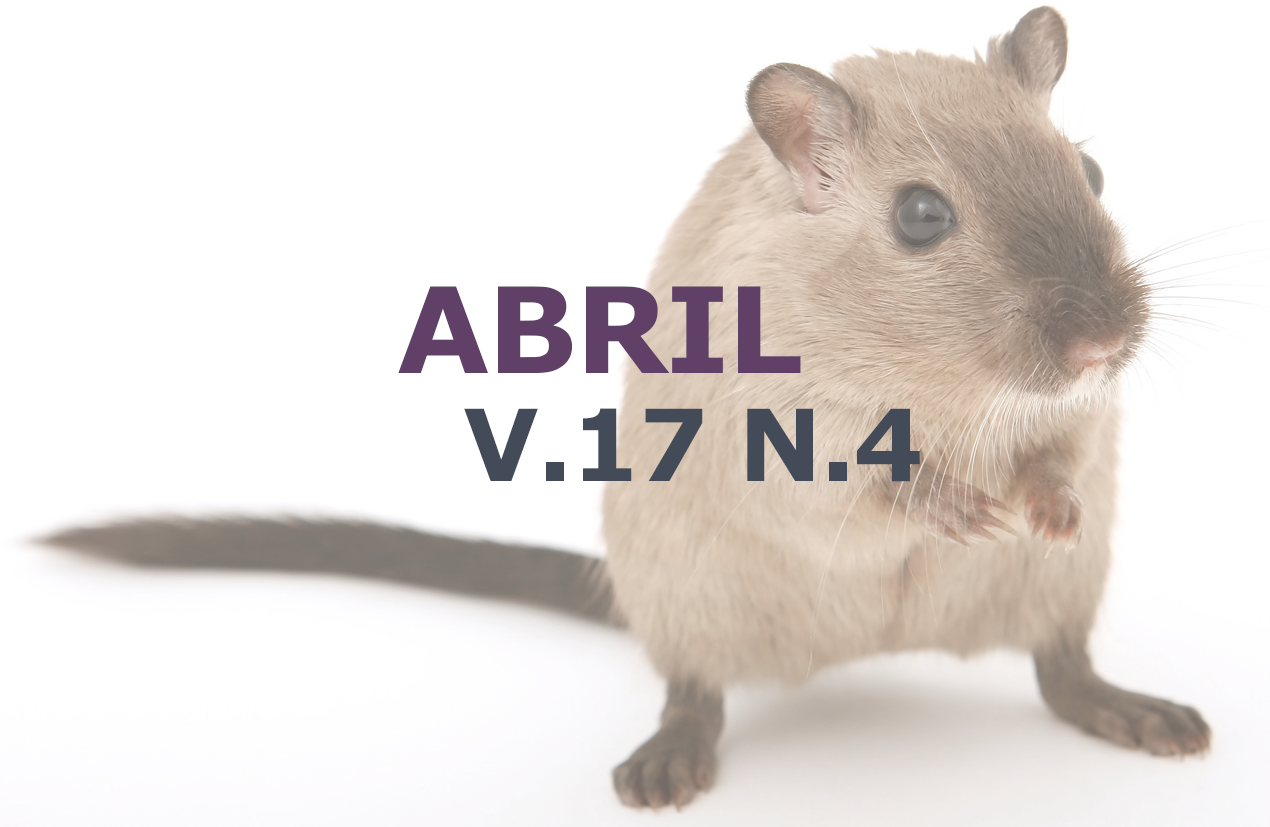Dilated cardiomyopathy in a dog with hypothyroidism and megaesophagus
DOI:
https://doi.org/10.31533/pubvet.v17n04e1366Keywords:
congestive heart failure, hypomotility, Hashimoto's syndrome, reduced shortening fractionAbstract
Dilated cardiomyopathy is characterized by a deficiency in ventricular contraction and it is known that several conditions can occur with low myocardial contractility and consequent dilation of the heart chambers. Hypothyroidism is an endocrinopathy that may be related to decreased muscle contractility, such as myocardial and esophageal muscles. The objective of this work was to report the case of a dog with hypothyroidism, megaesophagus and dilated cardiomyopathy. A canine patient, male, Fila Brasileiro, 8 years old and body condition score (ECC) 2 (1-9), presented with the main complaint of dyspnea, regurgitation, weakness, edema of the limbs, progressive weight loss, and hypotrichosis and Symmetrical bilateral alopecia on trunk and tail. Upon physical examination, a godet impression, pulmonary crepitation, grade IV systolic murmur (I-VI) and 8% dehydration were observed. Complementary tests such as chest X-ray, Doppler echocardiogram and serum free T4 by dialysis and TSH were performed, confirming the presence of dilated cardiomyopathy in congestive heart failure, megaesophagus and hypothyroidism. Palliative therapy was instituted to stabilize the patient, and specific oral treatment was initiated for the conditions with Pimobendan, Benazepril, Furosemide, Spironolactone, Levothyroxine sodium, administered in a bipedal position, in addition to food management with soft food, also in a bipedal position for 20 minutes. After one month of treatment, the patient showed clinical improvement, weight gain (ECC 3) and hair growth, but the tutor declined to perform hormonal follow-up tests, maintaining the initially prescribed doses. Early diagnosis, institution of appropriate treatment and monitoring of the patient in view of the instituted therapy are extremely important for stabilizing the patient and maintaining the body's homeostasis, increasing the quality and life expectancy of patients.
References
Alves, N. M., Dias, T. P., Pereira, A. M., Rosito, J., & Borges, M. M. (2013). Megaesôfago congênito em cão. PUBVET, 7, 2327–2445.
Barone, G. (2015). Tratado de medicina veterinária. Guanabara Koogan S.A.
Bilhalva, M. A. et al. Hipotireoidismo canino e seus efeitos sobre o sistema cardiovascular. PUBVET. V.14, n.4, a542, p.1-6, abr., 2020.
Boscarato, A. G., Alberton, L. R., Komochena, H. A. E. S., Botelho, E., Ribeiro, R. de C. L., Orlandini, C. F., & Steiner, D. (2016). Esporotricose equina e hipotireoidismo iatrogênico. Acta Scientiae Veterinariae, 44, 1–6.
Chaves, R. O., Schwab, M. L., Ripplinger, A., Copat, B., Aiello, G., Ferrarin, D. A., Flores, M. M., Fighera, R., & Mazzanti, A. (2017). Central vestibular disease due to ischemic stroke secondary to hypothyroidism in a dog. Acta Scientiae Veterinariae, 45(Supplement 1).
Ettinger, S. J., Feldman, E. C., & Cote, E. (2017). Textbook of Veterinary Internal Medicine-eBook. Elsevier Health Sciences.
Hoskins, J. D. (2008). Geriatria e Gerontologia do cão e do gato. Editora Roca.
Leal, P. D. S., Almeida, E. C. P. A., & Lopes, C. W. G. (2016). Diagnóstico de dermatopatia piogranulomatosa por Nocardia spp. numa cadela Labrador Retriever com hipotireoidismo, Rio de Janeiro, Brasil-Relato de caso. Brazilian Journal of Veterinary Medicine, 38(2), 203–209.
Mora, J. M., Pérez, E., & Millán, R. (2006). Trombo intraventricular izquierdo en un gato con cardiomiopatía dilatada. Clínica Veterinaria de Pequeños Animales, 26(2), 130–135.
Moreira, L. F., Kinappe, L. F. G., Duhart, D. G. M., & Motta, A. de S. (2018). A geriatria canina e o manejo das doenças neoplásicas: Revisão. PUBVET, 12(4), 1–7. https://doi.org/10.22256/pubvet.v12n4a79.1-7.
Muzzi,R.A.L. et al. Cardiomiopatia dilatada em cão: Relato de caso. Ciência Rural. Santa Maria, v. 30, n. 2, p. 355-358, 2000.
Nelson, R. (2011). Medicina interna de pequenos animais. Elsevier Brasil.
Oliveira, W. J., Germano, P. C., Endrigh, M., da Costa, B. N., Bueno, A. L. B., Barbosa, C. K., de Sousa, R. S., de Oliveira Stedile, S. T., & Sousa, M. G. (2022). Tromboembolismo arterial em felino decorrente de cardiomiopatia restritiva: Relato de caso. PUBVET, 16(11), 1–9. https://doi.org/10.31533/pubvet.v16n11a1266.1-9.
Orton, C. E. (1997). Surgery of cardiovascular system. In Small animal surgery (pp. 575–608). Fossum, T W.
Souza, I. R., Bomfim, L. T., Dias, S. R. M., & Santos, K. L. O. (2022). Megaesôfago em cães: Revisão. PUBVET, 16(3), 1–6. https://doi.org/10.31533/pubvet.v16n03a1059.1-6.
Strey, S., Mischke, R., & Rieder, J. (2021). Hypothyroidism in dogs: an overview. Tierarztliche Praxis. Ausgabe K, Kleintiere/Heimtiere, 49(3), 195–205. https://doi.org/10.1055/a-1367-3387.
Tanaka, N. M., Hoogevonink, N., Tucholski, Â. P., Trapp, S. M., & Frehse, M. S. (2010). Megaesôfago em cães. Revista Acadêmica Ciência Animal, 8(3), 271–279.
Tostes, R. A., Reis, S. T. J., & Castilho, V. V. (2017). Tratado de medicina veterinária legal (Vol. 1). MedVep.
Downloads
Published
Issue
Section
License
Copyright (c) 2023 Rebeka Ferro Tosta Kalil

This work is licensed under a Creative Commons Attribution 4.0 International License.
Você tem o direito de:
Compartilhar — copiar e redistribuir o material em qualquer suporte ou formato
Adaptar — remixar, transformar, e criar a partir do material para qualquer fim, mesmo que comercial.
O licenciante não pode revogar estes direitos desde que você respeite os termos da licença. De acordo com os termos seguintes:
Atribuição
— Você deve dar o crédito apropriado, prover um link para a licença e indicar se mudanças foram feitas. Você deve fazê-lo em qualquer circunstância razoável, mas de nenhuma maneira que sugira que o licenciante apoia você ou o seu uso. Sem restrições adicionais
— Você não pode aplicar termos jurídicos ou medidas de caráter tecnológico que restrinjam legalmente outros de fazerem algo que a licença permita.





